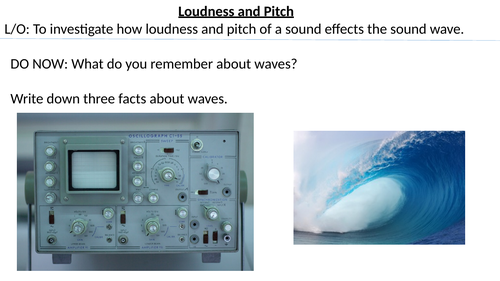
This is the third lesson in a unit of work on sound. The lesson is aimed towards KS3 but could be adapted to other levels. The main focus of the lesson is to get pupils to interpret oscilloscope traces and identify the difference between high pitch and low pitch, loud and soft sounds.
For a bundle of all five lessons in this unit, click here.
During this lesson pupils will:
- Recap general knowledge about waves from prior lessons.
- Recap the features of transverse waves: Wavelength, amplitude and frequency.
- Identify high and low frequency sounds from a trace.
- Use a virtual (or real) oscilloscope to see how a trace changes with different types of sounds.
- Identify the difference between loud and soft sounds.
- Identify the difference between high pitch and low pitch sounds.
- Complete consolidation activities including drawing traces of different sounds.
- Investigate the audible frequency range of different animals and graph them.
- Suggest why different animals have different ranges based on activity and environment.
- Identify animals that can hear infrasound and ultrasound.
Please visit my shop for more lessons in this unit and other science, history and geography resources.
Get this resource as part of a bundle and save up to 48%
A bundle is a package of resources grouped together to teach a particular topic, or a series of lessons, in one place.
Something went wrong, please try again later.
This resource hasn't been reviewed yet
To ensure quality for our reviews, only customers who have purchased this resource can review it
Report this resourceto let us know if it violates our terms and conditions.
Our customer service team will review your report and will be in touch.
